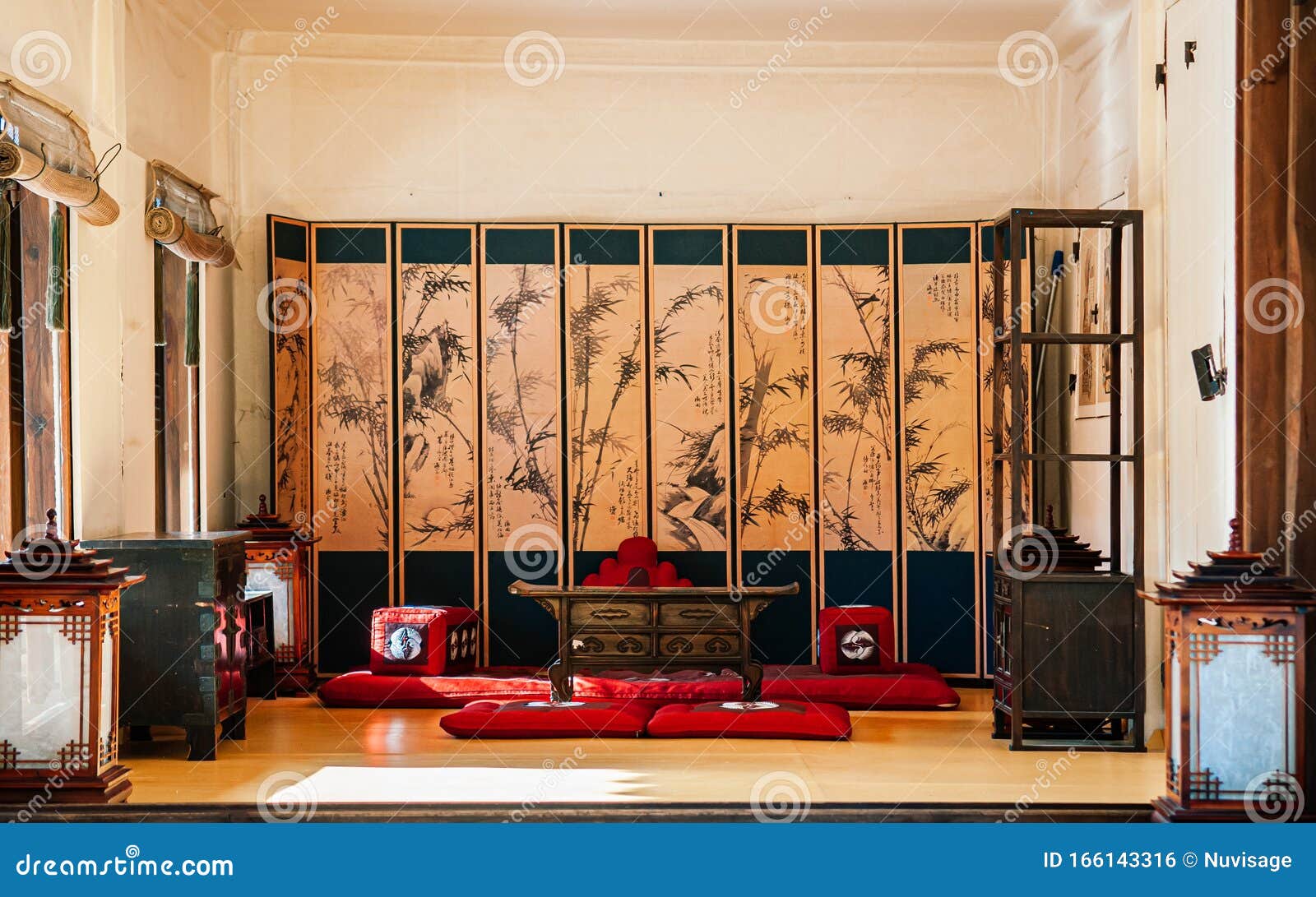Table Of Content

Fires are less necessary during the summer and Korean homes kept cool by utilizing natures cooling system, the movement of air. When the door is closed, it becomes a wall and when it is open, it brings in the breeze to keep air circulating throughout the living spaces. Thatch roofs easily caught fire, and spread to the neighboring houses, but they were easy to replace when the whole community pitched in. When it comes to traditional Korean hanok houses, sustainability and environmental considerations are at the forefront of their design. These houses have been built for centuries using natural materials and techniques that minimize their impact on the environment. In this article, we will explore the various aspects of hanok house design that contribute to their sustainability.
Related News
See Inside This Korean Home That Looks So Futuristic - Apartment Therapy
See Inside This Korean Home That Looks So Futuristic.
Posted: Tue, 27 Feb 2024 08:00:00 GMT [source]
He soon discovered that many homeowners were using city grants and low-interest loans to demolish traditional houses to make way for more modern structures, adding small flourishes to make them look like original hanoks. It successfully utilises various elements and styles to create an aesthetic architectural wonder. The smooth texture and clean lines of wood remind us of city dwelling, while the roughness and uneven pattens of brick are reminiscent of farm houses. The almost unexpected fusion of both scenes comes together to build a favourite contemporary design. Even without raising the walls, some hanoks have windows and doors that are purposely placed to act as frames to the beauty outside.
Hanok design
The fireplace has a long chimney that reaches the roof, guaranteeing the dwellers warmth at all times. Built on a hill, the aesthetic blend of white walls, natural wood and tinted glass makes for a stylized yet homely dwelling place. The classic look, created by the combination of a streamlined grey roof and white walls, is given an Asian flair through the use of antique wood for the doors and windows. From the slightly elevated section, wrapped by a wooden terrace, you are treated to a breathtaking view. Enjoy this sight particularly during early mornings and at dusk, when there is cross ventilation from all sides.
How one mall has become a culture-defining hub for Orange County’s newest Koreatown
With a palatial, patently luxurious feel to the dining room and a roomy outdoor patio, Chosun Galbee is our other favorite Korean barbecue restaurant for special occasions. For over two decades, this classic Koreatown restaurant has offered smokeless grills, attentive service (something you can’t find at every KBBQ spot) alongside a high-quality meat selection. We also love the jungol, a type of Korean udon hot pot we’ve yet to find done better anywhere else in the city. Available with seafood, beef intestine or a combination of meat and seafood, the bubbling family-style dish features a spicy, umami-rich broth and plenty of vegetables. Also known as Mapo Galbi, Mapo Chicken’s signature dish has made this no-frills ajumma-run restaurant a beloved favorite among Korean food lovers for years. Meant to be eaten in groups of two or four, this bubbling red family-style dish full of chicken, rice cakes, perilla leaves and other vegetables can be spiced to your liking and modded out with cheese, udon noodles and extra vegetables.
Some of the residents of hanoks were so much in awe of what they saw around them that they wrote and posted poetry on the pillars of their hanok while they viewed the natural splendor around them. Hanoks create open space by connecting the human living unit and its surroundings, joining man with nature, and giving birth to life. The wood gable roof clad with dark-gray roof tiles resonate with Hanok architecture. A deck on the ground floor as well as on the upper floor right below the roof provides a cool space to relax in the hot summers.
Concrete ring connects cluster of South Korean homes by AOA Architects
Drive-thru sales hit $133 billion in 2022, an increase of 30% from 2019 pre-pandemic levels, according to Technomic, a restaurant industry consulting firm. Food was long an afterthought at malls, and department stores were the primary reason shoppers visited. As U.S. malls race to reinvent themselves, they’re turning to sushi conveyor belts, craft-beer membership clubs and Korean barbecue to replace burgers and fries.
TRADITIONAL KOREAN HOMES (HANOKS)
In the larger cities of South Korea, only small clusters of hanok remain. However the value of hanok has been discussed in the early twentieth century, with many comparing them favourably to the more common but less eco-friendly apartments found across South Korea. Today, some train stations are influenced by traditional hanok design (Jeonju Station, for example). Paleolithic people in the Korean peninsula may have occupied caves or made temporary houses. They dug into the ground with a small shovel and built a small house that used rafters and columns.
Traditional Korean Hanok Houses: Architecture and Design
At all hours of the day, Sun Nong Dan’s two Koreatown locations fill up with diners hankering for the cheese-covered mountain of marinated short rib, potatoes and onion known as galbi jjim. Though the cheese—and its requisite tableside pyrotechnics—is optional, the restaurant’s signature dish is not, at least for first-timers. Aside from their signature family-style dish, the rest of the beef-centric menu offers single-serving soups and meat platters designed to be dipped into bubbling hot pots. If you’re closer to the San Gabriel Valley, Sun Nong Dan also has outposts in San Gabriel (open until midnight) and Rowland Heights (open 24/7). For those near Koreatown, the larger location on Western Avenue typically has a much shorter wait. “During the 1970s and '80s, while the rest of Seoul was being remodeled by mayors with nicknames like "Bulldozer Kim," the government maintained strict regulations on Bukchon.
Blending Old and New: 6 Neo-Traditional Korean Homes
Korea’s architecture is motivated by daily norms such as eating, relaxing, and working, as well as industrialised production processes and geographical circumstances. Having sunshine in strategic places of the home is a frequent characteristic. Greenery, open areas, lots of windows, and crystal doors are some of the common features of Korean house designs. “Traditional mall restaurants were casual dining chains like Chili’s, TGI Fridays, and quick-service restaurants in food courts. The amount of space dedicated to food in malls has grown from 5% in the 1990s to 15 to 20% today, according to Deloitte.
I prefer the subtler mul version, which offers a tangy, beefy flavor worthy of sipping to the very last drop, especially after lightly seasoning it with the mustard and rice vinegar available at each table. Bubbling, red-tinged bowls of comforting tofu soup are now commonplace across Los Angeles, but this Koreatown eatery inside a former Mexican restaurant (look up at the cactus chandeliers) takes an unusually artisan approach to its soondubu. All the tofu at Surawon is made in-house (a relative rarity), and for a slight upcharge, there’s also a unique black soybean variety that lends a complex, almost nutty aftertaste to the soup’s typically neutral soy foundation.
The son was taught directly by the father, of beliefs and law, living, studying, and receiving guests together. Sent every Tuesday and containing a selection of the most important news highlights. Sent every Thursday and featuring a selection of the best reader comments and most talked-about stories. The bottom level is home to a garage as well as a distinct pedestrian entry, framed by an arched concrete slab. The first level includes a huge spacious living room that extends onto an outside terrace, which can be reached by a flight of steps. During the era of Korea under Japanese rule, the ruler used terms such as "jooga" or "Joseon house" when they were talking about house improvement.

Intake vents in hanji’s walls allow airflow throughout the house without opening any doors. One of the most popular places to view it, is in the Korean highlands, which are peaceful havens. Incorporating ancient woodwork for the entryways gives a distinct Asian flair to this traditional appearance, which is achieved by pairing the sleek grey roof with the white walls. Typically the houses of yangban (upper class), jungin (middle class) and urban commoners, with giwa (tiled roof), emphasized not only the function of the house, but also its aesthetics. The houses of provincial commoners (as well as some impoverished yangban), with choga (a roof plaited by rice straw), were built in a more strictly functional manner.
The restaurants have big wooden beams and a bar with craft beers in their center. Landlords are counting on emerging restaurant brands like Lazy Dog, Gen Korean BBQ and Postino Wine Café to draw customers back to malls. So-called “eatertainment” concepts such as Puttshack and Topgolf, which can extend the amount of time people spend in a mall, are expanding. One fast-growing chain targeted to families, Kura Revolving Sushi Bar, delivers plates to diners on conveyor belts as rolling robots serve drinks. Tableside monitors offer games, cartoons and toy prizes for big eaters. With its everyday ambience, decent menu prices and top-notch meat selection, Soowon Galbi is one of our favorite Korean barbecue spots in K-town, especially when we’re in a group of four or more.
Sinabro Korean restaurant opens in Third Ward, dishing up authentic flavors - Radio Milwaukee
Sinabro Korean restaurant opens in Third Ward, dishing up authentic flavors.
Posted: Fri, 29 Mar 2024 07:00:00 GMT [source]
"As the process of gentrification unfolded, the country was modernizing," Ureña said. "These houses were torn down and new ones and high-rises and whatnot were built." The trace of the U-shaped ondol pipe which points toward the southwest, is 3.7 meters wide to the west, 6.4 meters to the north and 4.7 meters to the east, and is 1-1.3 m wide.
A distinctive feature of the hanok (traditional Korean house) is an underfloor heating system called ondol. Literally meaning “warm stones” and developed during the prehistoric period, ondol refers to the system of channels running beneath the stone floor of a room through which heat is delivered from the fireplace in the kitchen. It is also designed to effectively draw out the smoke through the under-the-floor passages connected to the chimney. One of the most fascinating elements of hanok houses is their use of space. Unlike modern houses, which often prioritize large living areas, hanok houses focus on creating intimate and cozy spaces.


No comments:
Post a Comment